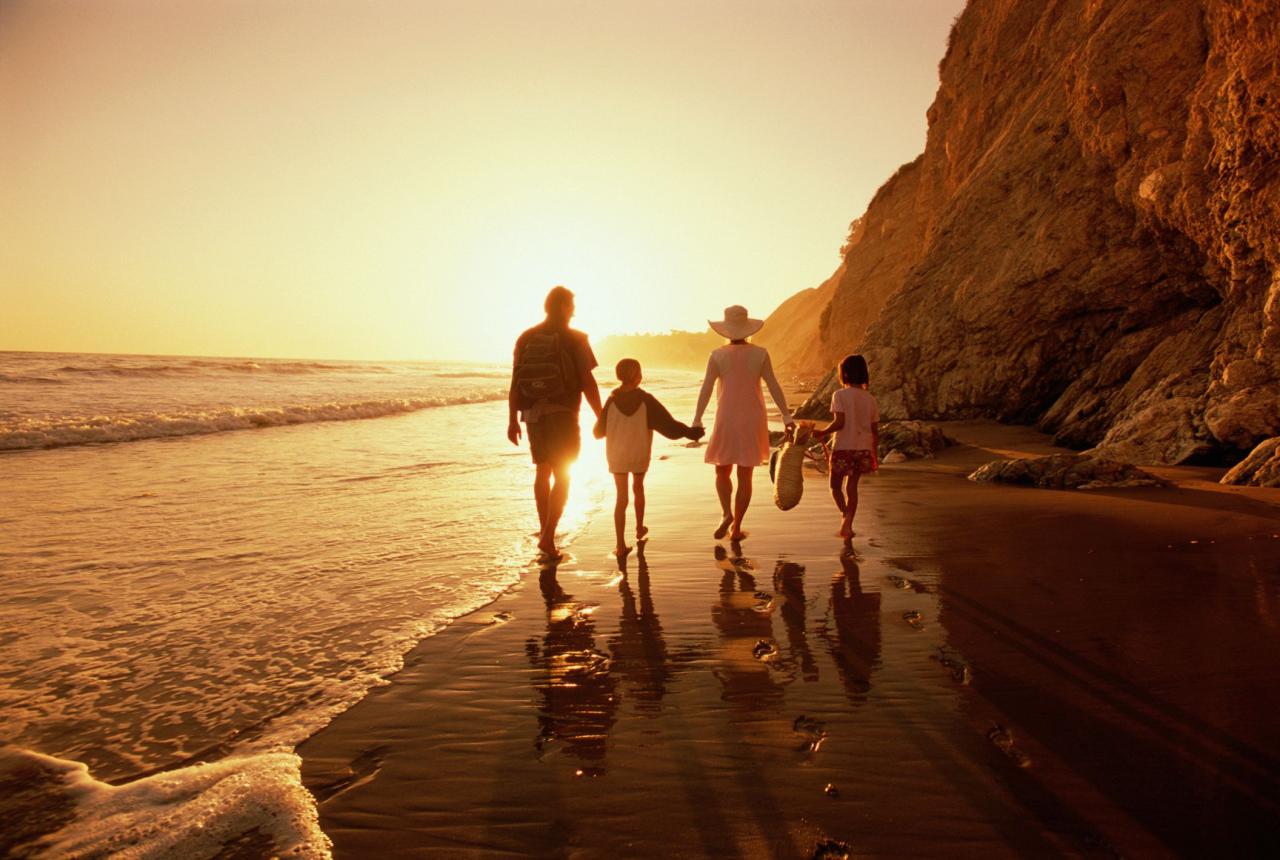In an increasingly connected yet often fractured world, the desire for meaningful experiences and quality time together has elevated family travel from a mere vacation to a cornerstone of modern life. No longer content with generic resort stays, families are actively seeking journeys that cater to every member, especially the youngest adventurers, proving that family travel: kid-friendly trends explode across the globe.
This comprehensive article will delve into the compelling factors driving this dynamic evolution, dissecting the innovative approaches making family travel more inclusive and engaging, exploring its profound benefits for child development and familial bonding, offering practical strategies for planning unforgettable family getaways, and highlighting how this specialized segment is reshaping the future of tourism. Prepare to discover how shared exploration is building stronger bonds and creating cherished memories for generations to come.
Crafting Shared Adventures

For many years, family vacations were almost exclusively synonymous with theme parks, beach resorts with kids’ clubs, or visits to relatives. While these options still hold their appeal, a significant shift has occurred. Modern parents, often themselves well-traveled, are seeking more enriching, authentic, and truly shared experiences that go beyond mere entertainment, focusing on learning, discovery, and active participation for every family member.
Kid-friendly trends are at the heart of this transformation. It’s about recognizing that children are not just passengers but active participants in the travel experience, with their own curiosities, energy levels, and learning styles. This means meticulously planned itineraries that incorporate elements of play, education, adventure, and relaxation, all designed to appeal to diverse age groups within a single family unit. Imagine an archaeological dig for kids in Greece, a cooking class for all ages in Italy, or a wildlife safari tailored for young explorers in Africa. This evolution is driven by a desire to create lasting memories, foster global citizenship, reduce travel-related stress for parents, and provide unparalleled opportunities for growth and bonding. Family travel is now less about just occupying children and more about truly engaging them, transforming a simple trip into a profound shared adventure that strengthens familial ties and broadens young minds.
Why Kid-Friendly Family Travel Is Booming
Several powerful and interconnected factors are fueling the rapid expansion and increasing sophistication of family travel, particularly its kid-friendly focus:
A. Increased Parental Emphasis on Experiential Learning:
Modern parents view travel as an extension of education. They seek opportunities for their children to learn about different cultures, history, geography, and wildlife firsthand, outside the classroom. This drives demand for trips with educational components, hands-on activities, and authentic local interactions.
B. Technological Advancements in Planning and Engagement:
User-friendly booking platforms, travel apps with kid-centric content (e.g., interactive maps, scavenger hunts), and engaging travel vlogs make planning easier and inspire children’s interest in destinations. Onboard entertainment and interactive exhibits also keep kids engaged during transit.
C. Demand for Authentic and Immersive Experiences:
Families are moving away from generic tourist traps towards genuine cultural immersion. This includes engaging with local communities, participating in traditional crafts, learning local languages, and experiencing daily life, often facilitated by kid-friendly workshops or guides.
D. Influence of Social Media and Family Travel Bloggers:
Platforms like Instagram, TikTok, and family travel blogs showcase aspirational, yet attainable, family adventures. This visual storytelling inspires other families, providing practical tips and normalizing diverse, adventurous itineraries with children of all ages.
E. Flexibility of Remote and Hybrid Work Models:
The widespread adoption of remote and hybrid work environments grants parents greater flexibility in choosing travel dates outside of traditional peak seasons, allowing for longer trips and more time to explore without disrupting school schedules significantly.
F. Focus on Multi-Generational Travel:
Grandparents, parents, and children are increasingly traveling together. This necessitates itineraries that cater to a wide range of ages, energy levels, and interests, leading to demand for flexible accommodations and activities that appeal to everyone.
The Diverse Landscape of Kid-Friendly Travel
The concept of “kid-friendly” is no longer limited to just playgrounds and pools. It encompasses a vast and diverse array of experiences, catering to every age, interest, and energy level within the family unit.
Emerging and Popular Kid-Friendly Travel Types
A. Adventure & Nature Immersion Trips:
These focus on active engagement with the outdoors, such as guided wildlife safaris (tailored for children’s attention spans), age-appropriate hiking or kayaking expeditions, farm stays where kids participate in daily chores, or national park explorations with junior ranger programs.
- Appeal: Fosters a love for nature, teaches environmental stewardship, and provides active engagement.
B. Educational & Cultural Journeys:
Trips designed to expose children to history, science, and diverse cultures in engaging ways. This includes interactive museum visits, historical reenactments, cooking classes focusing on local cuisine, language immersion experiences, or artisan workshops.
- Appeal: Combines fun with learning, broadening children’s worldviews and fostering curiosity.
C. Multi-Generational Travel Experiences:
Itineraries crafted to cater to grandparents, parents, and children, often involving flexible accommodations (e.g., villas, interconnected rooms), diverse activity options, and shared experiences that everyone can enjoy together, from leisurely cruises to soft adventure tours.
- Appeal: Strengthens family bonds across generations and creates shared memories.
D. Sustainable & Responsible Family Tourism:
Families increasingly choose trips that minimize environmental impact and support local communities. This includes staying at eco-lodges, participating in conservation projects (e.g., beach cleanups), or visiting ethical wildlife sanctuaries.
- Appeal: Teaches children about responsible tourism and global citizenship.
E. “Slow Travel” with Family:
Instead of rushing between destinations, families spend extended time in one region, deeply exploring it at a leisurely pace. This might involve renting a house in a European village for a month or a long road trip with numerous stops.
- Appeal: Reduces travel stress, allows for deeper cultural immersion, and fosters a sense of local living.
F. Theme Park & Entertainment Resort Evolution:
Beyond traditional rides, these resorts are now incorporating more immersive storytelling, educational components, character interactions, and diverse dining options, offering a more holistic family entertainment experience.
- Appeal: Classic fun for kids, with increasing sophistication and varied experiences for the whole family.
Benefits for Families and Beyond
The advantages of prioritizing kid-friendly elements in family travel extend far beyond entertainment. These journeys offer profound developmental benefits for children and strengthen the family unit in invaluable ways.
Advantages of Embarking on Kid-Friendly Family Travel
A. Strengthened Family Bonds and Shared Memories:
Overcoming challenges, celebrating discoveries, and experiencing new things together creates a unique bond and a treasure trove of shared memories that last a lifetime, fostering a deeper sense of connection and belonging.
B. Enhanced Learning and Global Awareness:
Direct exposure to different cultures, languages, historical sites, and natural environments provides invaluable real-world education, broadening children’s perspectives and fostering global citizenship and empathy.
C. Development of Adaptability and Resilience:
Navigating unfamiliar environments, dealing with unexpected situations, and adapting to new routines helps children (and adults) develop flexibility, problem-solving skills, and a sense of resilience.
D. Increased Confidence and Independence:
For children, trying new foods, communicating in new settings, or mastering a new skill during travel builds self-confidence, fosters independence, and encourages a sense of adventure.
E. Digital Detox and Quality Face-to-Face Time:
Travel, especially to remote or nature-focused destinations, encourages a break from screens, promoting genuine interaction, conversation, and imaginative play, enhancing family communication.
F. Promotes Empathy and Cultural Understanding:
Interacting with people from different backgrounds and observing diverse ways of life helps children develop empathy, respect for differences, and a more nuanced understanding of the world.
G. Stress Reduction and Rejuvenation for Parents:
When children are engaged and happy, parents can relax and enjoy the trip more fully. Kid-friendly amenities and activities reduce parental stress, allowing for genuine rest and rejuvenation.
H. Fosters Curiosity and Lifelong Learning:
New sights, sounds, and experiences naturally spark curiosity in children, leading to questions, discoveries, and a desire to learn more, potentially inspiring lifelong passions and intellectual pursuits.
Planning Your Unforgettable Family Adventure

A successful kid-friendly family trip requires thoughtful planning to ensure it’s enjoyable and enriching for every member, balancing activities, downtime, and logistics.
Essential Steps for Planning Kid-Friendly Family Travel
A. Involve Children in the Planning Process:
Engage kids in age-appropriate ways. Let them research destinations, choose activities, or pack their own bags. This builds excitement, gives them ownership, and reduces potential complaints.
B. Research Age-Appropriate Activities and Attractions:
Go beyond general tourist guides. Look for specific museums with children’s wings, playgrounds, interactive exhibits, and tours designed for younger attention spans. Balance structured activities with free play.
C. Prioritize Comfort and Safety:
Choose accommodations with family-friendly features (e.g., cribs, connecting rooms, kids’ clubs, child-safe pools). Research local safety guidelines and healthcare facilities. Consider travel insurance.
D. Pack Smart and Efficiently:
Beyond clothing, bring familiar comfort items for kids (favorite toy, blanket), essential medications, snacks for travel, entertainment for downtime (books, small games), and age-appropriate first aid.
E. Plan for Downtime and Flexibility:
Don’t overschedule. Build in ample time for naps, unscheduled play, and spontaneous exploration. Be prepared to pivot if kids are tired or uninterested. Flexibility is key to reducing stress.
F. Consider Transportation Options Carefully:
Evaluate airlines with family-friendly policies (early boarding, kids’ meals), train travel for comfort and space, or road trips for flexibility. Plan for car seats, entertainment on the go, and frequent stops.
G. Pre-Book Key Attractions and Accommodations:
Especially during peak seasons, popular family-friendly hotels and attractions book up quickly. Pre-booking saves time, reduces stress, and often secures better rates or specific family rooms.
H. Manage Expectations (Yours and Theirs):
Understand that travel with kids will have its challenges. Not everything will go perfectly. Focus on the positive experiences and celebrate small victories. Help kids understand what to expect from the trip.
I. Budget Wisely for All Family Needs:
Factor in extra costs for kids (snacks, souvenirs, special meals, entrance fees for children’s activities). Look for deals where kids stay or eat free, or family passes that offer savings.
J. Incorporate Local Cuisine and Experiences:
Encourage kids to try new foods in a fun, non-pressured way. Seek out local markets, kid-friendly restaurants, or cooking classes that introduce them to new flavors and cultural aspects.
K. Stay Healthy and Hydrated:
Ensure everyone drinks plenty of water, especially in new climates. Carry hand sanitizer, healthy snacks, and be aware of food and water safety in different regions.
L. Document the Journey Together:
Encourage kids to keep a travel journal, draw pictures, or take photos. This helps them process their experiences, creates a lasting keepsake, and makes them more engaged observers.
The Future of Family Travel
The explosion of kid-friendly trends in family travel is not just a temporary phenomenon; it’s a testament to a fundamental shift in parental priorities and industry adaptation. Expect continued innovation, greater integration of technology, and a deeper focus on personalized, impactful experiences.
Emerging Trends in Future Family Travel
A. Hyper-Personalized Family Itineraries with AI:
Advanced AI will analyze family profiles (ages, interests, learning styles, energy levels) to create highly customized, adaptive itineraries, recommending activities, accommodations, and dining options that appeal to every family member simultaneously.
B. Gamified Travel Experiences for Kids:
Integration of game-based learning and interactive challenges within destinations and apps, turning sightseeing into an adventure (e.g., AR scavenger hunts in museums, digital “missions” in national parks), making learning fun.
C. “Blended Learning” Family Trips:
Journeys specifically designed to integrate formal and informal education, allowing children to learn core subjects (e.g., history, biology) through real-world experiences, often with certified educators or specialized curriculum support on the go.
D. Purpose-Driven and Regenerative Family Travel:
Increased opportunities for families to engage in meaningful conservation efforts, community service projects, or sustainable living initiatives during their trips, fostering a sense of responsibility and positive global impact in children.
E. Seamless Multi-Generational Connectivity Platforms:
Development of platforms that simplify planning and communication for multi-generational trips, allowing different family members to contribute to the itinerary and manage shared logistics with ease.
F. Kid-Centric Wellness Retreats and Active Breaks:
Expansion of wellness resorts and retreats that offer dedicated, age-appropriate programs for children (yoga, mindfulness, outdoor sports) alongside adult wellness activities, promoting holistic well-being for the entire family.
G. Virtual Reality (VR) Pre-Trip Immersion and Post-Trip Engagement:
VR experiences allowing families to virtually explore destinations and attractions together before booking, enhancing excitement and decision-making. Post-trip VR content could revisit memories or extend learning.
H. Adaptive and Inclusive Family Travel Technology:
Innovations in accessible transport, accommodations, and interactive experiences utilizing technology to cater to families with diverse abilities and special needs, ensuring travel is truly inclusive for all.
I. Family-Focused “Workation” Destinations:
More resorts and communities designed with dedicated co-working spaces for parents and supervised, engaging educational programs or activity camps for children, enabling parents to work productively while kids learn and play.
Conclusion
The explosion of kid-friendly trends in family travel signifies far more than a shift in tourism; it represents a profound investment in the future, where shared experiences and collective discovery become the bedrock of familial bonds. The era where family travel: kid-friendly trends explode is upon us, with every journey offering an unparalleled opportunity for growth, learning, and connection across generations.
By embracing innovation, prioritizing the unique needs of children, and continuously expanding the spectrum of engaging experiences, the travel industry is not just catering to a market; it’s facilitating the creation of cherished legacies. So, as you plan your next escape, remember that the most valuable souvenirs are not found in gift shops, but in the laughter shared, the lessons learned, and the indelible memories forged together as a family, one incredible adventure at a time. The world is calling, and it’s ready to welcome your whole family.













